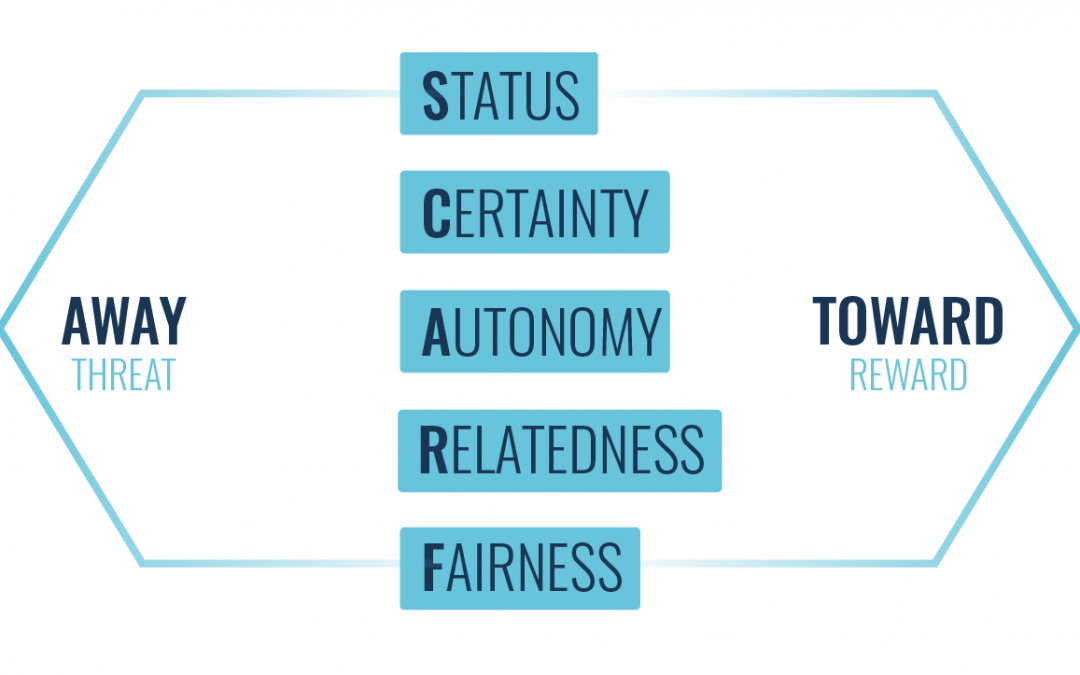David Rock’s SCARF model relates to what he sees as the 5 domains that influence our behaviour in social interactions. These are:
- Status
- Certainty
- Autonomy
- Relatedness
- Fairness
An effective understanding of the model can improve communication in the workplace, based on reducing any perceived threats an employee might experience and increasing the perception of reward. So, let’s break the model down.
Status: This is our relative importance in comparison to others – mishandling feedback could have a negative effect on a person’s sense of status. Reframing it in a positive way could be more constructive.
Certainty: This is our ability to predict the future – uncertainty can produce a fear reflex as we feel threatened and lose focus. Clear communication is important, as is breaking up a project into small easily understandable chunks.
Autonomy: This is our sense of control over events – positive psychology has shown us that a sense of autonomy and control is one of the most basic factors to producing positive wellbeing. Micromanaging an employee can reduce feelings of autonomy. It is better all around to allow them to take on more responsibility and use their initiative.
Relatedness: This is how safe we feel with others – we are social creatures. If we feel lonely it will reduce our motivation commitment and creativity. Encouraging employees to connect with each other through buddying or mentoring schemes can be helpful
Fairness: This is how fair we feel the exchanges between people are – when people perceive that they have been treated unfairly they can feel threatened. Clear, honest communication and treating all equally and fairly will optimize the performance of all.
It is to be noticed that this model echoes that of Self Determination Theory, detailed in another recent post, in its emphasis on the importance of autonomy and relatedness. Taken together the two models can provide managers with a framework around which to build positive communications with team members and boost wellbeing in the workplace.

